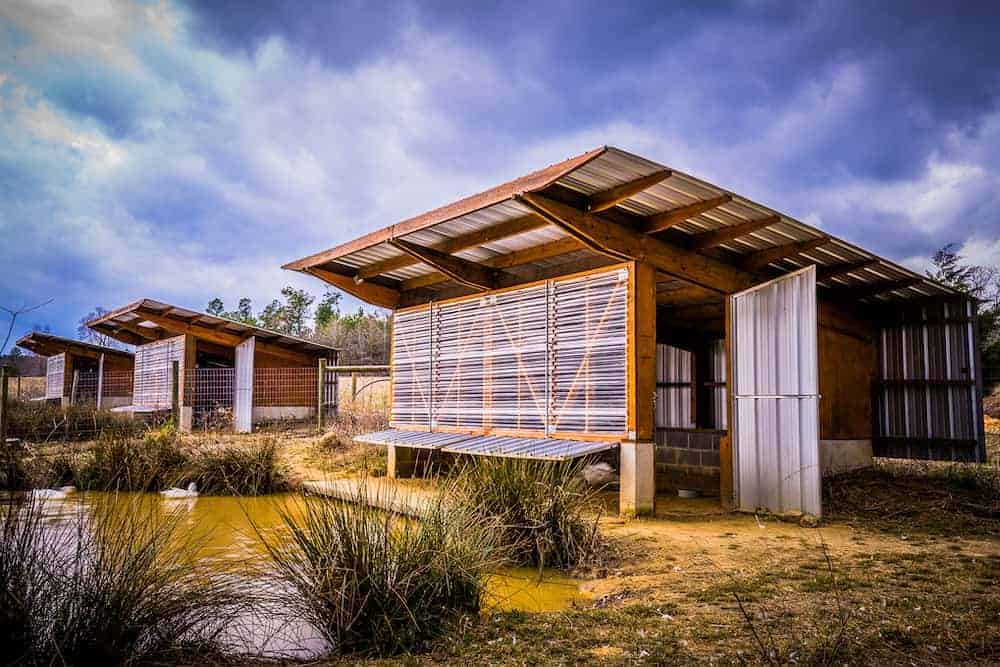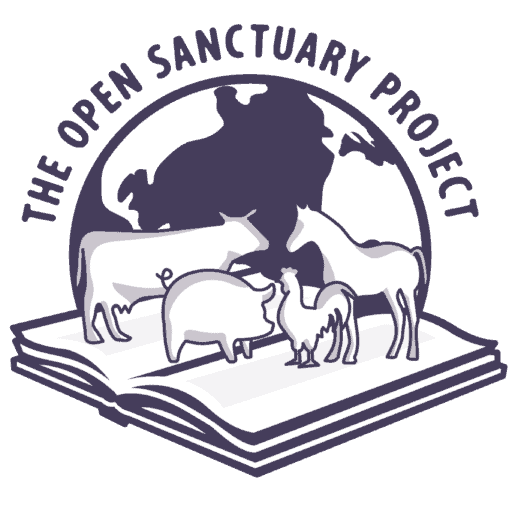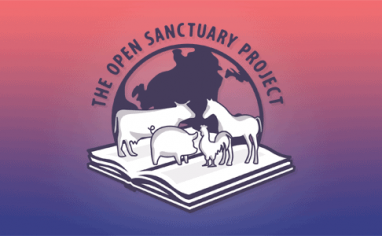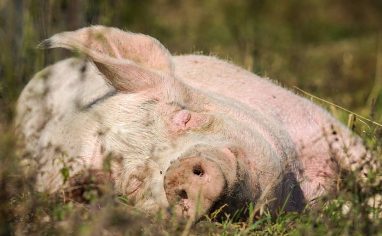
Updated December 23, 2020
When creating living spaces for sanctuary residents, we often focus on addressing the animals’ core needs: shelter from the elements, ample space, protection from predators, and other features that will encourage health and safety. We also often take into consideration the needs of the humans working in the space- an enclosure that allows for certain equipment or tools to be used, materials that can easily be maintained, and other features that can make the difficult task of animal care a bit easier. In essence, habitat design is often very pragmatic, with the end goal of meeting the basic needs of both the residents and the human caregivers.
In many areas of animal care, the idea of what animals need to thrive versus what they need to survive comes up. In a sanctuary setting, our goal should be to consider what our residents need to thrive and then find safe and appropriate ways to offer those opportunities. We often consider this “thrive versus survive” idea, maybe without even realizing it. For example, do you scoff (rightfully so) at industry and hobby farmers’ recommendations for how much space animals need, because you know they actually need so much more space in order to be happy and have healthy group dynamics? That’s the “thrive versus survive” mentality at work.
What might it look like if every part of a resident’s habitat was thoughtfully designed in order to accommodate their specific lifestyle? Animal-centered design asks us to go beyond the basic design requirements of animal sheltersOrganizations, either government-funded and maintained or not-for-profit and funded by charitable contributions, with a physical infrastructure in which homeless animals are cared for and offered for adoption. and habitats. It challenges us to ask: What kind of space might a goat (or chicken, or cow…) design for themselves if they could?
Let’s use chickens as an example for the moment. If you ask the average person to imagine what a happy chicken looks like and what their habitat looks like, what do you think they will imagine? How many people will imagine chickens perched up in trees or weaving their way through tall vegetation? It’s much more likely that they will be picturing chickens in an open pasture or free-ranging in a barnyard. DomesticatedAdapted over time (as by selective breeding) from a wild or natural state to life in close association with and to the benefit of humans chickens are, in fact, descendants of the forest-dwelling Red Junglefowl of Southeast Asia. So where did this idea of chickens in an open pasture come from? Many of us, likely without even realizing it, have been creating habitats based heavily on traditional farming methods. However, the values of a traditional farm versus those of a farmed animal sanctuaryAn animal sanctuary that primarily cares for rescued animals that were farmed by humans. are obviously quite different. By making intentional choices in animal habitat design, sanctuaries can better reflect their core values. Maybe that can be accomplished in a traditional barn-like space with certain changes or additions, or maybe you can better accomplish this by creating a space that looks nothing like a traditional barn. It isn’t so much about one or the other being right; it’s about putting the highest desires of the animals first. This is the starting point of animal-centered design.
What Do We Mean By Animal-Centered Design?
The driving principle behind animal-centered design is to create spaces that go beyond providing protection from the elements and security from predators. The humans over at Piedmont Farm AnimalA domesticated animal that is used by humans either for their body or what comes from their body. Farmed animals have fewer regulations governing their welfare than other species in many countries. Refuge sum it up as “providing a habitat that they (the residents) might choose for themselves.” They stress the point that animal-centered design doesn’t look one particular way. While animal-centered design might result in living spaces that look much different than a traditional farm, it’s the process of designing the space that is vastly different than the traditional farm model.
At Piedmont Farm Animal Refuge, the animal-centered design process always begins with a research phase. During this time, they focus on learning as much as they can about the species they are designing for. This includes spending time with members of the species (ideally in different settings and during different seasons) and observing their daily routines. In addition, they learn whatever they can from published materials and scientific journals about “the fundamentals” of their lifestyles and who they are. Questions asked during this phase include:
• What makes them feel safe?
• What makes them happy?
• Who are their ancestors, and what types of environments do/ did they live in?
• When members of this species go feral, where do they go, and what do they do?
The answers to these questions can be very useful when determining what a space might look like and where it should be located on your property. Ultimately, animal-centered design shouldn’t stop at the animals’ doorstep, but should extend throughout their entire habitat.
Why Is Animal-Centered Design Important?
It can be surprising to realize all the ways the old farming model may be influencing what we think we know about farmed animalsA species or specific breed of animal that is raised by humans for the use of their bodies or what comes from their bodies.. By engaging in an animal-centered design process, we can not only help our residents thrive, but we can also gain a better understanding of who they really are. As the folks from Piedmont Farm Animal Refuge put it:
“When we model this method of investing time and thought into farmed animalA species or specific breed of animal that is raised by humans for the use of their bodies or what comes from their bodies. living spaces, and show farmed animals thriving in beautiful individualized habitats, it helps to deepen everyone’s understanding and appreciation of them. It reinforces the fact that animals are individuals, with likes and dislikes, just like us, and it furthers the message that animals are sentient, worthy beings. In a way, animal-centered design is a physical representation of the values of the animal rights
Piedmont Farm Animal Refuge
The concept of providing nonhuman animals greater ethical and/or legal consideration to their basic interests, especially the avoidance of suffering and exploitation by humans. movement as a whole.”
Examples Of Animal-Centered Design
Now that we’ve talked about the basics of animal-centered design, let’s take a look at the living spaces it can create. In addition to the folks over at Piedmont Farm Animal Refuge, we talked to the humans at Triangle Chicken Advocates, who also focus on animal-centered design when creating living spaces for their residents. You’ll see that while each sanctuary follows a similar process, the end results vary greatly.
Get The Full Picture!
Check out the slideshows in full screen for each sanctuary to see better detail!
Animal-Centered Design At Piedmont Farm Animal Refuge
Animal-Centered Design At Triangle Chicken Advocates
Getting Started With Animal-Centered Design At Your Sanctuary
If the concept of animal-centered design is new to you, the idea of renovating a resident’s living spaceThe indoor or outdoor area where an animal resident lives, eats, and rests. (or multiple living spaces!) can be overwhelming. It’s okay to start small and make changes over time. The most important thing is to think about who your residents are, looking to their ancestors or wild relatives for a deeper understanding of their natural behaviors and habitats. In addition to the examples here, look to other sanctuaries and microsantuaries for ideas or inspiration. But most importantly, listen to your residents! They’ll let you know what they think of any changes you make to their living spaces, so let them guide you in the process.
Video Resource: An Introduction To Animal-Centered Design- Webinar Excerpt
The staff of The Open Sanctuary Project gave a webinar in 2020 as part of P.E.A.C.E. Canada’s Speaker Series, and we spent some time discussing animal-centered design as discussed in the rest of this resource. Check it out below!
References To Outside Organizations?
This resource contains links or photos provided by an outside animal-focused organization. You can learn about our organization’s position on endorsements here!








